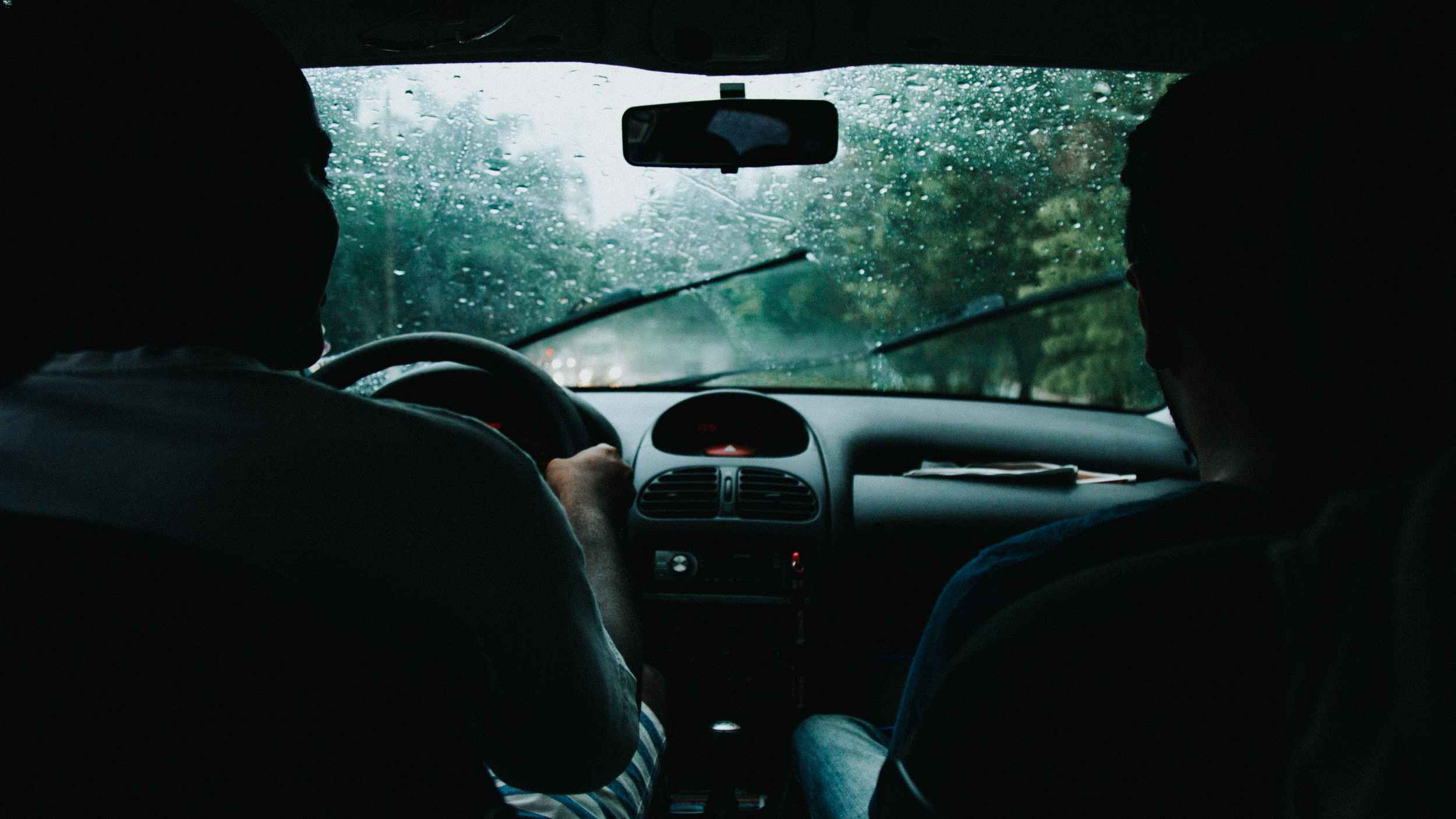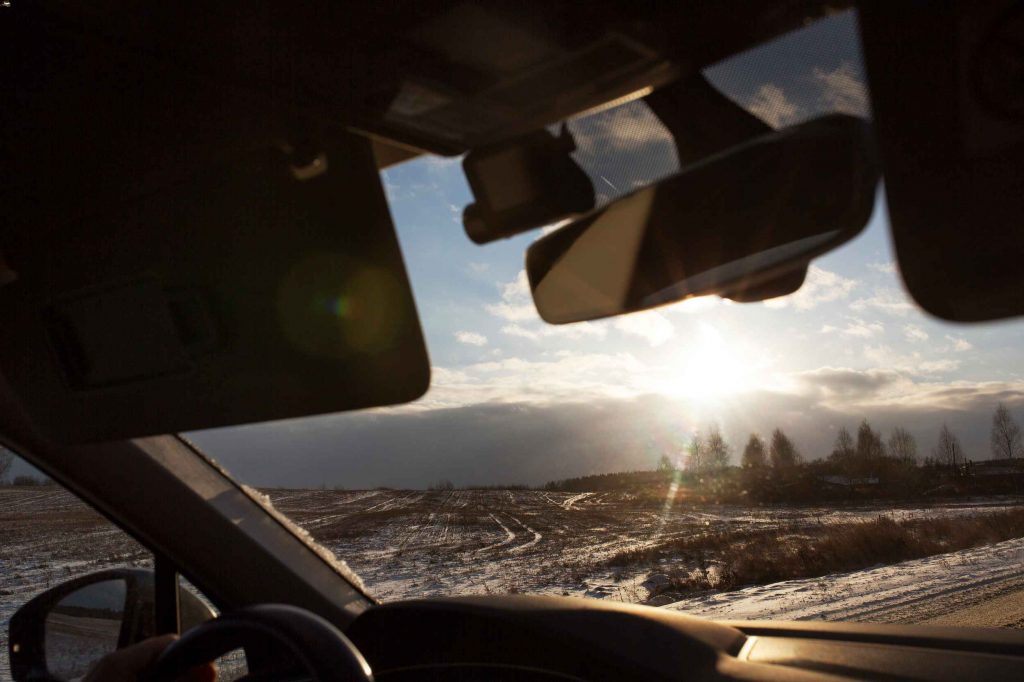It can be tough to see through a scratched windshield when driving. Sunlight reflects off the scratches, reducing visibility, and water can pool in the grooves, making it difficult for your windshield wipers to entirely remove the water.
While most small scratches can be fixed with the right tools, more serious damage should be restored by a professional. If your windshield appears to have minor scratches and you want to know how to fix them, you’ve come to the perfect place. We’ll direct you through a quick step-by-step guide on how to fix scratched windshield.

What Is a Windshield Made Of?
The primary components of windshield glass are soda ash, silica sand, dolomite, limestone, and cullet. Potassium oxide and aluminum oxide are frequently used in small amounts. The glass must maintain its clarity for an extended period. It must also be composed of durable materials that will provide structural support to the vehicle’s roof in the case of a rollover crash.
The windshield must be robust enough to withstand damage during minor collisions so that the vehicle owner does not have to replace it after each little fender bender. The most critical feature is that it must be shatterproof to prevent shards of glass from flying around in a catastrophic accident.
Are scratches on the windshield common?
Scratches on windshields are a typical phenomenon. In fact, it’s realistic to believe that more than 90% of windshields have some scratching or surface etching. Windshield scratches, on the other hand, vary in intensity and affect a driver’s ability to see well.
While some windshield scratches are barely visible and can only be seen in direct sunshine, others are extremely observable, if not downright distracting. Due to their tendency to cause significant glare, the latter of these two kinds of scratches is frequently problematic when traveling in direct sunshine.
Causes of Scratches on Windshield
Wipers
Have you ever encountered the terrible screech-screech of worn-out wiper blades? This horrible sound signals your windshield wiper blades are losing their soft rubber texture, which is more than simply bothersome.
It can definitely result in scratches and scuffs on the glass’s surface, particularly if the wiper blades are extremely rigid due to age and degeneration. Like everything else on your car, wiper blades should regularly be checked for deterioration symptoms and changed if there is even minor evidence of rigidity.
Improper cleaning method
Even when you’re trying to improve your car’s appearance, it’s easy to scratch the window glass. Improper cleaning practices can harm the surface of a windshield.
For example, if you use an abrasive scrub brush to remove tough grit, it could leave scratches, or if you go through an automatic car wash and the rotating cleaners have anything hard on them, it could leave scratches. It’s possible that your windshield will be scratched. Cleaning your windshield should be a delicate process, so proceed with caution.
Damaged ice scrapers
If you reside in a snowy area, snow can accumulate on your car’s windshield and glass. While tools such as ice scrapers are designed to protect the windshield, they can scratch it if they become worn or broken.
Road debris
Debris and pebbles flying off the road can scratch your windshield, especially if you’re traveling behind four-wheelers, which can easily trap rocks on the road.
Products You Can Use to Fix Scratched Windshield
Baking soda
To begin the baking soda repair, mix a paste with equal amounts of baking soda and water. Put the paste on the affected area and rub it in with a microfiber cloth in a circular motion. Rub several times more, then wash away any leftover paste with water or a dry cloth. Rep these steps for a few days till the scratches are gone.
Acrylic nail polish
Apply the acrylic nail paint directly to the scratches and wait a few minutes for it to dry and harden. Wipe away any excess liquids using a microfiber cloth for a glossy appearance. However, this method may only be effective for mild and superficial scratches.
Cerium oxide
Cerium oxide is a rare earth metal Cerium’s oxide. It comes as a powder that creates a thick paste-like consistency when mixed with a tiny amount of water. Cerium oxide is found in several specialty windshield polishing products. You can either buy the powder separately or buy a product that already contains it. For deep windshield scratches, this option is your best bet.
Related: How to Fix Deep Scratches on Car

How to Fix Scratched Windshield: Step by Step
Step 1
To find out how deep the scrape is, run your finger over it. Vertically hold your finger. You’ve got a severe scratch on your windshield if your nail catches. Deep scratches cannot be repaired. Scratches that are pleasant to the touch are shallow enough that they can be repaired.
Step 2
If your vehicle’s scratches are shallow, you should be able to obtain the necessary supplies. You’ll need:
- Water
- Glass cleaner
- Soft cloths
- A spatula
- Small bowls
- Dry-erase marker or tape
- Drill with a rubber polishing wheel
You’ll also need a scratch-repair product, which comes in three options, as we’ve just discussed in the above section.
Related: How to Buff Out Scratches on a Car
Step 3
Use a glass cleaner to clean the windshield, then dry it fully. Before trying to apply a polishing product, remove any dirt and debris. Begin with a common window cleaner. It’s sprayed on the window, then removed with microfiber towels. To remove harder stains, use specialized glass cleaners.
Step 4
Apply a rubbing compound to the scratched area with a clean, soft cloth. Using a microfiber cloth, carefully wipe the compound into the windshield after spraying it with water.
Step 5
To rub the scratches out, use a glass buffing pad. Wipe away any extra rubbing compound with a microfiber towel when you’re finished. Do not massage in a circular motion; instead, use long, broad strokes.
Step 6
Allow at least 30 minutes for the rubbing compound to dry or as directed on the auto glass repair kit’s instructions. To avoid more scratches, wipe your windshield and dry it with a microfiber towel once the compound has dried.
Step 7
Wipe away any remaining repair substance and clean the window once the repair is complete. At this point, you can wipe the entire window. The end product should be clear, scratch-free glass.
Conclusion
If you scratch or chip your car windshield, it’s essential to get it fixed as quickly as possible to prevent scratches from becoming large cracks. We hope that our guide on how to fix scratched windshield was useful. Keep an eye out for the most prevalent causes of windshield scratches.


